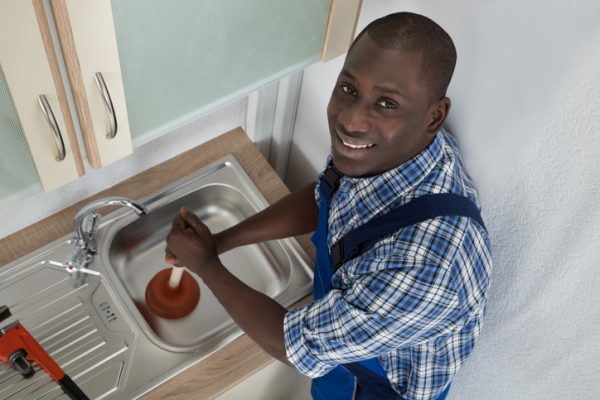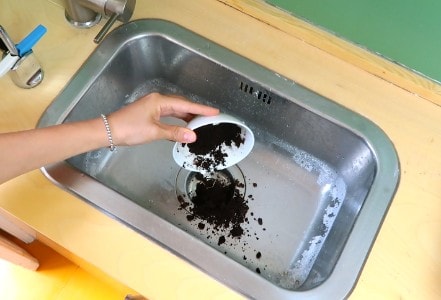What're your thoughts and feelings about Fixing Typical Household Plumbing Problems?

In this article, we will certainly be looking at five straightforward actions you might take to release your kitchen sink from clogs and conserve you from the discomfort as well as humiliation of taking care of a blocked kitchen sink.
Clogged cooking area sinks are just one of the most typical drain problems homeowners face. As well as what's more, it's a really unpleasant and also unpleasant view. Imagine going to the sink to do your meals and finding out that the drainpipe is clogged and water can not stream down conveniently.
Most clogged drains are brought on by food particles, soap, fat, as well as oil fragments. They obstruct the sink and also make it hard for water to go down the drain promptly. While it is alluring to put a call through to the plumbers, there are a couple of DIY hacks you might attempt first before making that phone call.
1. Sodium Bicarbonate and Vinegar
As opposed to utilizing any type of kind of chemicals or bleach, this approach is more secure as well as not unsafe to you or your sink. Sodium bicarbonate and also vinegar are everyday home things used for lots of various other things, and they can do the trick to your cooking area sink.
Firstly, get rid of any kind of water that is left in the sink with a mug.
Then pour an excellent amount of cooking soft drink down the tubes.
Pour in one cup of vinegar.
Seal the drainage opening and permit it to opt for some mins.
Pour hot water away to melt away other stubborn residue and also bits.
Following this basic method might do the trick, and also you can have your kitchen sink back. Repeat the procedure as high as you deem required to free the sink of this particles entirely.
2. Attempt a Plunger
If the trouble is not from the waste disposal unit, you can attempt making use of a plunger. Bettors are basic home devices for this event, and they can can be found in helpful if you use them appropriately. A flat-bottomed plunger is most appropriate for this, yet you can make do with what you have is a commode plunger.
Follow the following straightforward steps to use the bettor efficiently:
Secure the drainpipe with a cloth and fill up the sink with some hot water
Place the plunger in position over the drain as well as start diving
Check to see if the water runs easily after a couple of plunges
Repeat the process up until the drain is free
3. Possibly it's the Garbage Disposal
In lots of cases, the obstruction may be due to an obstruction in the disposal. Usage pliers instead.
If this does not work, you can discover the complying with option to unblock your kitchen sink.
4. Use a Hanger
Utilizing a cord towel wall mount or a plumber's serpent if you have one can do the technique. All you need do is correct the wall mount to go down the drainpipe while you carefully pick out the fragments triggering the blockage.
Run warm water down the tubes after this to see just how successful you were.
5. Usage Boiling Water
When faced with a clogged sink, the first thing you ought to attempt is to pour boiling thin down the drain. That is about the most straightforward solution to clogged sinks and also drains. Boiling water assists reduce the effects of the particles and debris causing the blockage, specifically if it's grease, oil, or soap particles, as well as in most cases, it can flush it all down, and your sink will be back to normal.
Do not attempt this method if you have plastic pipes (PVC) since warm water could melt the lines as well as create even more damages. You might want to stick to utilizing a bettor to obtain particles out if you use plastic pipes.
Utilizing this approach, switch on the faucet to see how water flows after putting hot water down the drain. Try the procedure again if the obstruction persists. Nonetheless, the blockage could be a lot more persistent sometimes and also require greater than just boiling water.
Final Words
Trying these couple of methods might conserve you the expenses of having a plumber examine it. But in many cases, a plumber is what we require. In cases where you find it tough to unclog the sink even after attempting all these methods, it might be time to leave it to the specialists.
Contact specialist plumbing business to fix your water drainage problems and other various family plumbing demands.
Clogged kitchen sinks are one of the most usual drainage concerns home owners encounter. Imagine going to the sink to do your meals as well as discovering out that the drainpipe is obstructed and water can not stream down quickly.
They block the sink as well as make it hard for water to go down the drainpipe rapidly. When faced with a blocked sink, the very first thing you should try is to put boiling water down the drain. Boiling water helps neutralize the bits and particles creating the clog, especially if it's oil, oil, or soap bits, and in many instances, it can flush it all down, and your sink will certainly be back to typical.
How to Unclog a Kitchen Sink
Take the Plunge
Start your efforts by plunging. Use a plunger with a large rubber bell and a sturdy handle. Before getting to work on the drain, clamp the drain line to the dishwasher. If you don t close the line, plunging could force dirty water into the dishwasher.
Fill the sink with several inches of water. This ensures a good seal over the drain.
If you have a double sink, plug the other drain with a wet rag or strainer.
Insert the plunger at an angle, making sure water, not air, fills the bell.
Plunge forcefully several times. Pop off the plunger.
Repeat plunging and popping several times until the water drains.Clean the Trap
The P-trap is the curved pipe under the sink. The trap arm is the straight pipe that attaches to the P-trap and runs to the drain stub-out on the wall. Grease and debris can block this section of pipe. Here s how to unclog a kitchen sink by cleaning out the trap:
Remove as much standing water from the sink as possible.
Place a bucket under the pipe to catch the water as it drains.
Unscrew the slip nuts at both ends of the P-trap. Use slip-joint pliers and work carefully to avoid damaging the pipes or fasteners.
If you find a clog, remove it. Reassemble the trap.
If the P-trap isn t clogged, remove the trap arm and look for clogs there. Run the tip of a screwdriver into the drain stub-out to fetch nearby gunk.Spin the Auger
With the trap disassembled, you re ready to crank the auger down the drain line.
Pull a 12-inch length of cable from the auger and tighten the setscrew.
Insert the auger into the drain line, easing it into the pipe.
Feed the cable into the line until you feel an obstruction. Pull out more cable if you need to.
If you come to a clog, crank and push the cable until you feel it break through. The cable will lose tension when this happens.
Crank counterclockwise to pull out the cable, catching the grime and debris with a rag as the cable retracts.

I was shown that report about DIY Plumbing Fixes through a good friend on another site. I beg you take a moment to promote this write-up if you enjoyed reading it. I am grateful for your time. Come back soon.
Save your home, call now!